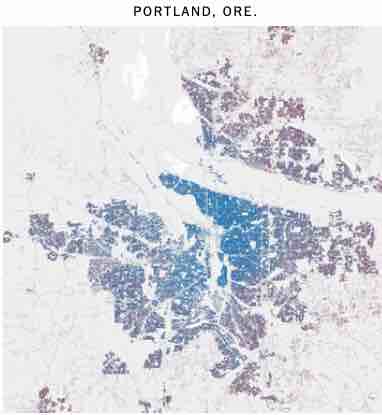The broad outlines of America’s partisan divides are visible on any national map. Republicans typically dominate in most Southern and Plains states, and Democrats in Northeastern and West Coast ones. Democrats cluster in urban America, Republicans in more rural places.
But keep zooming in — say, to the level of individual addresses for 180 million registered voters — and this pattern keeps repeating itself: within metro areas, within counties and cities, even within parts of the same city.
Democrats and Republicans live apart from each other, down to the neighborhood, to a degree that raises provocative questions about how closely lifestyle preferences have become aligned with politics and how even neighbors may influence one another.
As new research has found, it’s not just that many voters live in neighborhoods with few members of the opposite party; it’s that nearly all American voters live in communities where they are less likely to encounter people with opposing politics than we’d expect. That means, for example, that in a neighborhood where Democrats make up 60 percent of the voters, only 50 percent of a Republican’s nearest neighbors might be Democrats.
Democrats and Republicans are effectively segregated from each other, to varying degrees by place, according to the Harvard researchers Jacob Brown and Ryan Enos. And at least over the past decade, they believe this partisan segregation has been growing more pronounced.




